
Making Permaculture Stronger
[email protected] (Making Permaculture Stronger)
Collaboratively Realising Permaculture’s Potential
- 1 hour 52 secondsLiving Design Process and the Tetrad of Regenerative Development with Pamela Mang
Sometimes I find myself inside a dialogue that deeply meets me where I am and lifts me up to a place with more clarity, more vitality, and more possibility. This episode with Pamela Mang was one of these. Pamela is long-term friend and colleague of past guests Carol Sanford, Joel Glanzberg, Ben Haggard, and Bill Reed. She has been working in the space of regenerative design, resourcing and development for many decades. Co-founder of Regenesis Group, she is co-author (with Ben) of the 2016 book Regenerative Design and Development. She is also part of the faculty that runs The Regenerative Practitioner (TRP) programme.
In this dialogue Pamela helps me grok the tetrad of regenerative development that Regenesis works from in relation to my own work on Living Design Process.
 From this paper which in turn sourced it from Regenesis group.
https://youtu.be/UJdnMghawTY
From this paper which in turn sourced it from Regenesis group.
https://youtu.be/UJdnMghawTY
Upcoming TRPs in NZ and AU
Enrolments for the next Australian programme for TRP are open July 15th – August 19, 2022 and the programme commences on September 7th, 2022. Contact me if you’d like to be connected to Drika, Alana or Lara who are the AU co-hosts.
Enrolments for the next New Zealand programme are open July 15th – August 13th and the programme commences on September 2nd, 2022. I am considering enrolling myself so I may see you on the course. Contact me if you’d like to be connected to Lucy-Mary who is the NZ liaison.
Quotable Quotes
Now for a few things Pamela said that I was moved to write down here:
Design should be a vitalising process. It creates new vitality, new energies that can source different orders of health, different orders of understanding and so on
Pamela Mang
 Pamela Mang
Pamela Mang
The secret about these frameworks is that they don’t replace intuition. They hone it
Pamela Mang
Living Design Process
Find out more about the Living Design Process Pamela was resourcing me to look at through the tetrad framework here – the next online course of Living Design Process kicks off August 6th 2022 (why not complete before your TRP and make this a year of next-level learning!).
Support the Making Permaculture Stronger Book Project
This episode also marks the launch of a crowdfunding campaign to fund the creation of the Making Permaculture Stronger book – here’s the video and here’s a link to the campaign page. Support us and feel the good vibes that follow :-).
https://youtu.be/1O8KY_Rb-2U15 July 2022, 11:43 pm - 50 minutes 43 secondsBringing Professional Permaculture Design Work to Life with Alec Higgins – Part Two (E78)
Enjoy part of two of this rich dialogue about bringing Living Design Process to professional permaculture design consultancy. Will make more sense if you listen to Part One first.
 An aerial photo of the Mayberry project which is mentioned in this episode and is a good example of a design process that uses earthworks and trees to create beautiful organic spaces in between…
27 June 2022, 5:47 am
An aerial photo of the Mayberry project which is mentioned in this episode and is a good example of a design process that uses earthworks and trees to create beautiful organic spaces in between…
27 June 2022, 5:47 am - 56 minutes 5 secondsBringing Professional Permaculture Design Work to Life with Alec Higgins – Part One (E77)
Many thanks to Alec Higgins for prompting this exploration. In the first of two instalments, we develop premises for transitioning into professional permaculture design work. Enjoy and to learn more about working with Living Design Process please visit www.LivingDesignProcess.org – the next course starts in August and you can learn more about it here.
 A photo of the early development of the project I explored with John Caruthers here. From drone footage by Peter Watts
8 June 2022, 4:21 am
A photo of the early development of the project I explored with John Caruthers here. From drone footage by Peter Watts
8 June 2022, 4:21 am - 1 hour 3 minutesDaniel Christian Wahl on Aligning with Life’s Regenerative Impulse
It was an honour to connect in this episode with Daniel Christian Wahl to explore what it means to align with life’s regenerative impulse.
Here’s Daniel’s book Designing Regenerative Cultures, his Medium Blog and here’s his wonderful youtube series Voices of the Regeneration.
Early on Daniel mentions Christopher Alexander’s Challenge to Permaculture. A few times he mentions Henri Bortoft’s book The Wholeness of Nature.
 Daniel Christian Wahl
Daniel Christian Wahl
Enjoy, thanks to Daniel for visiting Making Permaculture Stronger, and thanks to our mutual friend Clinton Callahan for connecting us.
20 May 2022, 4:02 am - 1 hour 17 minutesCreating from Fear, Chaos, and the Groundless Void with Clinton Callahan (E75)
In this lively second conversation (find the first here) Clinton Callahan and I dive right in to swap notes on the dynamics of living creation processes. We cover creating from fear, chaos, and the groundless void as well as feelings, the unknown, the phoenix process, surfing the wave you are are, and much else.
https://youtu.be/qKNGwiqGxToYou can find out more about Clinton at his website here and during our chat he mentioned fearclub.org, rageclub.org and possibilityteam.org
2 May 2022, 2:58 am - 55 minutes 35 secondsCelebrating the Life and Work of Christopher Alexander
On March 17, 2022, at 85 years of age, Christopher Alexander passed away peacefully in his home in West Sussex, England.
This post celebrates his life, and for me, personally, the sheer magnitude his work has had on the course of my life, including Making Permaculture Stronger as a project. If any of you have been touched by this project, then you have been indirectly impacted by Alexander’s life-long quest toward life, beauty and wholeness. Find out about who Alexander was here and here and here and here. Learn about Alexander’s direct influence on my (Dan Palmer’s) work, and on this very project here and here.

A Poem
Thank you to Ann Medlock, a past client (and hence collaborator) of Alexander’s, for permission to share these photos and this poem here:

Alexander sculpts a building
out of air and wisdom
waving his hands
squinting his eyes
to see what only he and God can see
in this clearing on the bluff.
Listening to something
we cannot hear, he brings into being
a house so solid, silent and calm,
so embracing, consoling and inevitable,
that it draws in and restores
every open soul that finds its way here.
And many do.
Pilgrims who have heard,
who’ve seen a photograph,
who sense that here there is something
mysterious, rare, perhaps even inspired.
On a clear blue afternoon
we sit at a long table in the sun,
the house embracing this garden
and all of us who bask here
amid the calendulas and ferns.
Feasting on tabouli and cold birds,
we talk of poetry and paintings,
of terraces in Tuscany and homemade wine,
of our work, our passions, our quests.
We are friends, gathered here
by the grace that emanates from this holy place.
At Christmas, the clan assembles.
The tree, dressed in familiar ornaments,
touches the coffered ceiling
and sends the scent of balsam to mingle
with fire, roast and cakes.
Thick walls hold out the cold, the wind,
and every danger of the world we know.
Comets cut across the high windows
as we are drawn in and held fast, together,
blessed by the house that Alexander made,
while listening to God.
Three Examples of Directly Alexander-Inspired Design Processes
https://vimeo.com/456075580/0e4846f331 https://www.youtube.com/watch?v=C2k35m_Q9xg&ab_channel=MakingPermacultureStronger https://youtu.be/l8lffVxj7DISome Quotes
Here I share a selection of some of my favourite quotes from Alexander’s many books.

The Timeless Way of Building (1979)
You are alive when you are wholehearted, true to yourself, true to your own inner forces, and able to act freely according to the nature of the situations you are in.
[…] To be happy, and to be alive, in this sense, are almost the same. Of course, if you are alive, you are not always happy in the sense of feeling pleasant; experiences of joy are balanced by experiences of sorrow. But the experiences are all deeply felt; and above all, you are whole; and conscious of being real.
To be alive, in this sense, is not a matter of suppressing some forces or tendencies, at the expense of others; it is a state of being in which all forces which arise in you can find expression; you live in balance among the forces which arise in you; you are unique as the pattern of forces which arises is unique; you are at peace, since there are no disturbances created by underground forces which have no outlet, at one with yourself and your surroundings.
This state cannot be reached merely by inner work.
There is a myth, sometimes widespread, that you need do only inner work, in order to be alive like this; that you are entirely responsible for your problems; and that to cure yourself, you need only change yourself. This teaching has some value, since it is so easy to imagine that your problems are caused by “others.” But it is a one-sided and mistaken view which also maintains the arrogance of the belief that the individual is self-sufficient, and not dependent in any essential way on their surroundings.
The fact is, you are so far formed by your surroundings, that your state of harmony depends entirely on your harmony with your surroundings.
Some kinds of physical and social circumstances help you come to life. Others make it very difficult. (pp. 105-106, edited by me from third into second person voice)
 Building designed by Alexander within Eishen Campus in Japan
Building designed by Alexander within Eishen Campus in Japan
This next quote changed my whole approach to design:
This [approach to design] is a differentiating process.
It views design as a sequence of acts of complexification; structure is injected into the whole by operating on the whole and crinkling it, not by adding little parts to one another. In the process of differentiation, the whole gives birth to its parts: the parts appear as folds in a cloth of three dimensional space which is gradually crinkled. The form of the whole, and the parts, come into being simultaneously.
The image of the differentiating process is the growth of an embryo.
It starts as a single cell. The cell grows into a ball of cells. Then, through a series of differentiations, each building on the last, the structure becomes more and more complex, until a finished human being is formed.
The first thing that happens is that this ball gets an inside, a middle layer, and an outside: the endoderm, mesoderm, and ectoderm, which will later turn into skeleton, flesh, and skin, respectively.
Then this ball of cells with three layers gets an axis. The axis is laid down in the endoderm, and will become the spine of the finished person.
Then this ball, with an axis, gets a head at one end.
Later, the secondary structures, eyes, limbs, develop in relation to the spinal axis and the head.
And so on. At every stage of development, new structure is laid down, on the basis of the structure which has been laid down so far. The process of development is, in essence, a sequence of operations, each one of which differentiates the structure which has been laid down by the previous operations.
…
In nature a thing is always born, and developed, as a whole.
A baby starts, from the first day of its conception, as a whole, and is a whole, as an embryo, every day until it is born. It is not a sequence of adding parts together, but a whole, which expands, crinkles, differentiates itself. (pp. 368-383)
Get rid of the ideas which come into your mind. Get rid of pictures you have seen in magazines, friends’ houses …. Insist on the pattern, and nothing else.
The pattern, and the real situation, together, will create the proper form, within your mind, without your trying to do it, if you will allow it to happen.
This is the power of the language, and the reason why the language is creative.
Your mind is a medium within which the creative spark that jumps between the pattern and the world can happen. You yourself are only the medium for this creative spark , not its originator.” (p. 397)

The Nature of Order: An Essay on the Art of Building and the Nature of the Universe: Book Two: The Process of Creating Life
Our current view of architecture rests on too little awareness of becoming as the most essential feature of the building process. Architects are too little concerned with the design of the world (its static structure), and not yet concerned enough with the design of the generative processes that create the world (its dynamic structure) (p. 4)
In our profession of architecture there is no conception, yet, of process itself as a budding, as a flowering, as an unpredictable, unquenchable unfolding through which the future grows from the present in a way that is dominated by the goodness of the moment (p. 12)
In a living system what is to be always grows out of what is, supports it, extends its structure smoothly and continuously, elaborates new form — sometimes startlingly new form — but without ever violating the structure which exists.
When this rule is violated, as it was, far too often, in 20th-century development, chaos emerges. A kind of cancer occurs. Harm is done. All in modern society succeeded, in the last century, in creating an ethos where where buildings, plans, objects…are judged only by themselves, and not by the extent to which they enhance and support the world. This means that nature has been damaged, because it is ignored and trampled upon. It means that ancient parts of towns and cities have been trampled, because the modernist view saw no need to respect them, to protect them.
But even more fundamental, it came about because the idea of creativity which became the norm assumed that it is creative to make things that are unrelated (sometimes disoriented and disconnected just in order to be new), and that this is valuable–where in fact it is merely stupid, and represents a misunderstanding, a deep misapprehension of how things are. Creativity comes about when we discover the new within a structure already latent within the present. It is our respect for what is that leads us to the most beautiful discoveries. In art as well as in architecture, our most wonderful creations come about, when we draw them out as extensions and enhancements of what exists already.
The denial of this point of view, is the chief way in which 20th-century development destroyed the surface of the earth (p. 136)
At each stage in its evolution the process — when a living one — always starts from the wholeness as it currently exists at that moment. The work is complete in some respects, in some respects incomplete. At the next moment, we take a new step — introducing one new bit of structure… into the whole. The new structure we introduce may be large, medium, or tiny… But the point is that at every stage of every life-creating process, the new bit of structure which is injected to transform and further differentiate the previously existing wholeness, will always extend, enhance, intensify the structure of the previous wholeness… (p. 216)
The enigma is that something new, unique, previously unseen — even innovative and astonishing — arises from the extent to which we are able to attend to what is there, and able to derive what is required from what is actually there… and that all this, then, will lead to astonishing surprises (p. 340)
In each place, a being slowly emerges from the mist (p. 340)
Intellect is too crude a net to catch the whole (p. 388)
 A shot of Eishen Campus in Japan – Alexander’s largest project
A shot of Eishen Campus in Japan – Alexander’s largest project
The Nature of Order: An Essay on the Art of Building and the Nature of the Universe: Book Three: A Vision of a Living World
Life in nature, and in the humanly constructed world, is generated by a process of unfolding in which living structure grows in stepwise fashion from a current condition (the system of centers which exists) and takes on greater life by a series of structure-preserving transformations, or adaptations (p. 2)
I propose then, that the world should be created by adaptive processes which act as nature does, itself. They allow us to create a harmonious whole that embraces nature and creates buildings, streets, and towns, in a fashion which has the same deep structure as nature, and has the same deep effect on us as a result (p. 3)
What is the character of the kind of world where we experience emotional possession of the places we are in? It is a world in which the fine adaptation between people and their buildings and gardens and streets is so subtle, goes so deeply to the core of human experience, that the people who then live and work and play in that environment feel as if they belong there, as if it belongs to them, as if they are part of it, as if, like an old shoe, it is completely and utterly theirs (p. 43)
My aim for the last few decades has been, through the use of living process, to construct a situation in our world where a deep, profound belonging can exist and does exist. (p. 43)
Living process in a garden depends on people following their own hearts, allowing the call of their own hearts, dreams, feeling, to become actual in that place (p. 235)
In a section entitled positive space in gardens:
Then we build structures in these outdoor areas to differentiate them further, into smaller living centers, animated by the structures – steps, walls, parapets, railings, seats, embankments, bridges, slopes.. that we build in them. And then we allow natural life to rip loose, the plants, the grass, the trees, the bushes — and let these form still further centers, which then animate the positive space even further. That will happen almost of its own accord, if the initial positive space has been correctly made. This is the form the living process takes, in making a garden (p. 243)
If a dynamic process is followed, so that each time the next step follows existing things — preserves the structure, and creates and maintains relationships — we get a harmonious living community.
If, instead, a static master-plan-based approach is followed, and the 20 or 100 things are built according to the original drawing or plan, then they will exist, for the most part, without real functional relationships: the whole is unrelated in its internal elements; there has been no structure-preserving going on, step after step, and the whole remains dead (p. 336)
Here are a few photos from I mention in the episode to accompany a quote from Grabow, Stephen. Christopher Alexander: The Search for a New Paradigm in Architecture. Oriel Press, 1983. I haven’t yet written out here.


Some Videos
Now for a few youtube videos of Alexander.
https://youtu.be/NAjz0INs3Lc Note I particularly love this moment. https://www.youtube.com/watch?v=VZHb9-Y9r_E Chris speaks to the birth of the pattern language idea… https://youtu.be/98LdFA-_zfA https://youtu.be/oKO3vYjZbcs “Really one of the very largest problems that is facing the earth just now is rarely mentioned, and that is the spread of ugliness”Some Links
PatternLanguage.com – The most developed and resource website I know of that Alexander was directly involved in
Christopher Alexander’s Neglected Challenge to Permaculture – the first time I publicly applied Alexander’s ideas to permaculture
Living Design Process – The emerging hub for one particular development of Alexander’s living process approach
Building Beauty – Alexander-Inspired education run by a bunch of fine folk who knew and worked alongside Alexander
Rob Hopkins interview with Alexander – well worth a read.
Please submit other relevant links in the comments below.
Some Closing Words
I wrote these lines maybe five or six years ago. They feel appropriate to share here now.
Where did living design process start for me?
Well, one image jumps to mind, so I’ll run with that.
It is January, 2014.
I’m standing next to my mother on lush, green grass.
We’re looking across her new vegetable garden.
After almost ten years as a professional permaculture design consultant, this job had been different.
The writings of Christopher Alexander had been on my radar for some years, with a small but significant influence on my design practice.
In particular, in a passage from The Timeless Way of Building, Alexander had helped me move away from seeing sound design as an effectively mechanical process of assembling elements into whole systems.
I was now seeing sound design as an organic process of unfolding parts from within the fabric of an already-existing whole system.
But on this project, I had somehow completed a multi-year, slow-motion jump from the former to the latter way of viewing and practicing design.
Indeed, during the process, I had entered and started applying ideas from Alexander’s later writings. After devouring his 2012 book Battle for the Life and Beauty of the Earth I dove into his four-volume, 2000-page masterwork The Nature of Order (2002).
Back to my mother and I, standing there. Surveying her freshly planted garden beds. She asked what I was up to.
For in my hands I held open Book Two of The Nature of Order. I had just a few minutes prior read Alexander making an intriguing claim.
He proposed that if one was to design and create using the living process he has been developing throughout his 60-year career, the result will be infused with fifteen specific properties.
Fifteen properties Alexander claims are characteristic, definitive even, of what he calls living structure. Living structure is another way of saying stuff that is as fitted to its context as almost anything we consider part of nature (a tree, for instance, or a jellyfish, wave, or rock).
The properties have names like strong centers, levels of scale, gradients, alternating repetition, and echoes. It is for another time and place to list or explain them all (go read his books!). The point here is simply that they exist, and that Alexander claims if you go about creating something in the way he advocates, it will have many if not all these properties in it.
The moment I read this I walked over to the garden, my mother joining me, curious to see what I up to.
“Let’s settle this right now, Christopher!” I was thinking.
I hadn’t been aware of the 15 properties during the process of designing and building the garden. As for my co-designers, mum and dad, they had barely even heard of Alexander.
And yet as process facilitator I had been keeping us as true as I knew to the living process Alexander says will reliably birth these fifteen properties into the world. Being true to the process means that we had been consciously engaging our whole body-minds in letting the parts of the garden emerge from within the context of the whole space as we laid it out and shaped it up.
It was a golden opportunity to empirically test his contention.
I remember my spine tingling as I looked from the list of properties on the open page to the garden and back again.
Every property was there.
I say it again.
Every property was there.
That moment is as good a moment as any to nominate as the moment that living process, and what we’re now calling living design process, really took root in my soul.
I thank you, Christopher Alexander for, in your beautiful writings, helping germinate the seed that lies inside us all.
Dan Palmer
Endnote: For me, the creation and ongoing development of Living Design Process is the primary way I am keeping Alexander’s extraordinary legacy alive in the world. Learn more about it here and sign up for the first ever online course about it here.
28 March 2022, 10:58 pm - 1 hour 2 minutesPossibility Management and Permaculture with Brianne Vaillancourt
In this episode Brianne Vaillancourt and I explore the the edge between Possibility Management and Permaculture. In particular we explore the potential to harness conscious feelings in our design work. Having started this conversation back in episode fifteen with Clinton Callahan, I feel joy to be going there again. Joy because the clarity of the distinctions I have learned in Possibility Management contexts are contributing so much to my work in design, holding space, and my life generally.
 Brianne Vaillancourt & Dan Palmer
Brianne Vaillancourt & Dan Palmer
Learn more about Brianne (and sign up to her newsletter!) through her personal website.
Learn more about Clinton at his personal website.
Learn more about Anne-Chloé Destremau, who Brianne mentions, here.
Learn more about Possibility Management, Rage Club, Fear Club and Mage Training which are all mentioned. Something that wasn’t mentioned, but I was thinking of during the episode, is this site using the term Whole Permaculture to explore the Permaculture-Possibility Management bridge.
If you are interested in learning more about Possibility Management in an actual training experience, I recommend this online Expand the Box training run by my friend, colleague and guide Vera Franco.
Huge thanks to Ellen’ Schwindt for the musical intermission – below is a video of the larger composition I sample. Let me know if these things work for you and I’ll get them in more often!
https://player.vimeo.com/video/52914348510 March 2022, 10:04 pm - 1 hour 13 minutesAn Emergent Dialogue with Eloisa Lewis
In this episode in was my pleasure to get to know permaculture consultant Eliosa Lewis from New Climate Culture. I thoroughly enjoyed hearing about Eloisa’s journey and work and look forward to having her back.

Here is a link to Kevin Bayuk of Project Drawdown that Eloisa speaks so highly of.
Here is the crypto token She talks about: https://icube.finance
I look forward to your comments (including questions for future conversations with Eloisa) and at the start I mention online events on Holistic Decision Making and Living Design Process you can find out more about here.
18 February 2022, 4:13 am - 1 hour 7 minutesCarol Sanford on Indirect Work (E71)
In this episode it is my great pleasure to welcome Carol Sanford back to explore her brand new book Indirect Work.

To support and celebrate the book’s launch, Carol has offered a giveaway offer exclusively for listeners of Making Permaculture Stronger. If you listen to and then share this episode on your website or any of your social media channels (such as sharing from the Making Permaculture Stronger facebook page), and then let me know about it, you go into the draw to access:
- A free copy of Indirect Work posted to your door
- A free ticket to a 90-minute Q&A on Indirect Work with Carol 10am PT, May 2, 2022 ($200 value)
- The link to download a pdf Self-Assessment for Regenerative Integrity. $100 value
There are also a bunch of different offers for buying different numbers of books here on Carol’s site.
Now, a little taste of what this book is all about. Carol explains that:
indirect work is building the capacity in people to consistently think at higher levels in order to create innovations for advancing specific contexts and streams of activity. This capacity allows us to become instruments for the regeneration and evolution of the living systems within which we are nested—to become effective change agents.
Carol Sanford
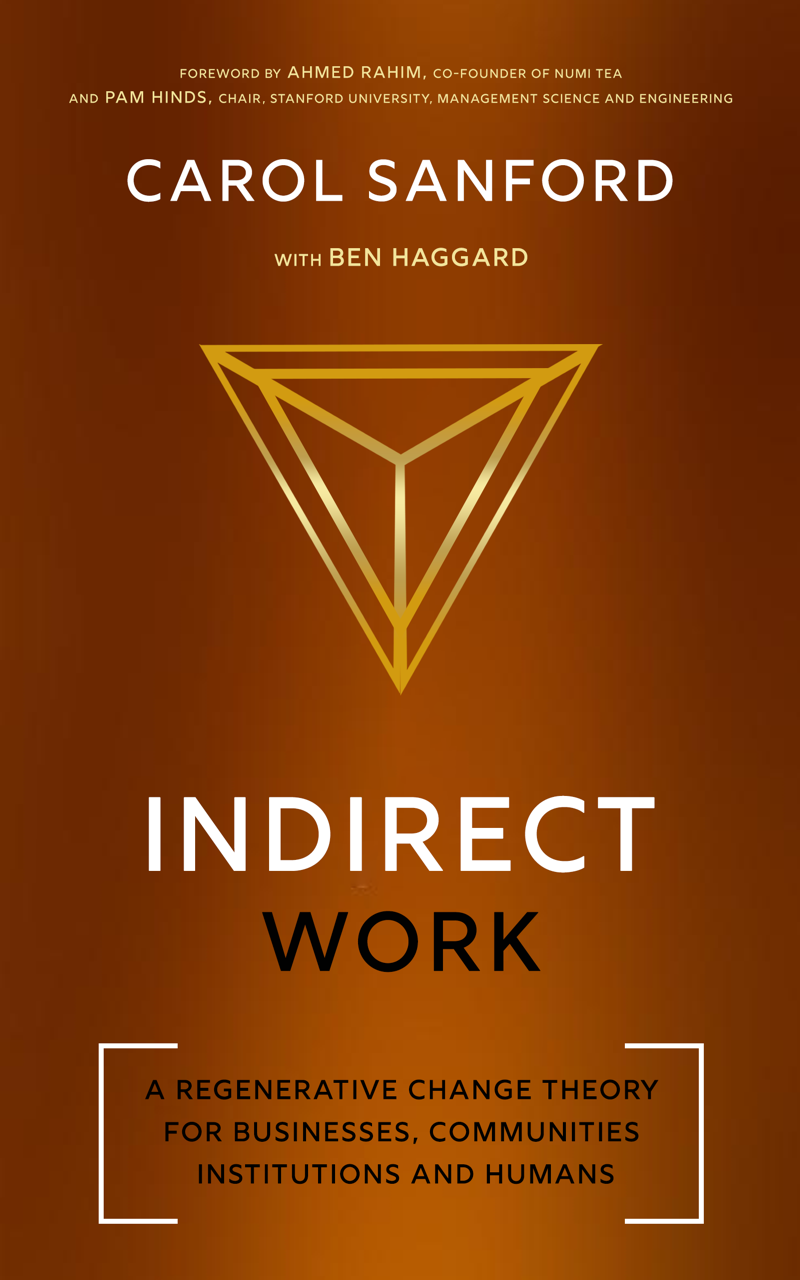
Here are a few of my favourite passages in the book.
For example, every time we try to solve a problem, dividing it into its components to understand it better, seeking to figure out its causes in order to address them, we fall under the spell of classical mechanics. Every time we translate something into a replicable (and therefore scalable) procedure or recipe, we’ve stepped into a machine universe. This is so pervasive in Western and now global culture that it becomes invisible to us. It can be very difficult to get our minds to shake off this continually reinforced pattern in order to question our fundamental shared beliefs about how the universe works.
Earlier I said that this book was addressed to well-intentioned people who seek to make the world a better place through the instruments that are available to them, such as business, social activism, or creation of policies and institutions. I also said that most of these efforts are likely to be compromised or fail because they still operate from an old paradigm, within which the world is assembled from discrete pieces, each playing its part in a cosmic machine. Our machine-based metaphors are so pervasive that we hardly notice them: input, output, feedback, leverage, rewiring, reprogramming, metrics, ideal state, and on and on.
A living or regenerative paradigm has a very different character and uses correspondingly different metaphors. It starts with an image of the living, dynamic, and unfolding universe, in which each entity is endowed with the spark of life and an innate capacity for growth and evolution with regard to how it expresses itself. Working from this paradigm, one doesn’t attempt to push the world and its inhabitants to an ideal state—that would be coercive and life denying. Rather, one encourages and enables living beings to discover and express their innate potential as contributors to living communities. For those of us who truly want to transform the world, it is the regenerative paradigm that will enable us to do so.
This confronts us with an important question. Are the underlying beliefs, assumptions, patterns, and language that characterize my culture derived from a machine or a living systems paradigm? And if I want to cultivate a living systems culture, what must I do I to help with the shift? (note – Carol answers this question in our conversation!)
Consciousness is the necessary antidote to our overwhelming tendency to engage in automatic habits of thought and behavior. In its absence, these habits extend to the most general reaches of our collective understanding of the universe, itself, conceived of by Western Europeans in the time of the Renaissance as a giant clockwork. This peculiarity of regional imagination has now become the dominant paradigm of reality worldwide. As such, it has created a self-reinforcing loop in which the mechanistic universe is reflected in the conceptualization of our bodies and minds as biological machines and our institutions as social machines. Thus, we invent mechanistic metaphors and processes for educating and healing ourselves. In other words, we resort to conditioning, a default approach that is precisely the opposite of living free, self-determined human lives. And, in a mechanical feedback process, this conditioning reinforces the already prevalent tendency toward automatism.
But the process of accretion of information and action, no matter how comprehensive, will never on its own generate the shift in perspective that allows us to engage with a living whole. If anything, the tendency to aggregate and integrate only serves to reinforce the problems associated with fragmentation. This is because it derives its raw materials from the underlying practice of breaking things down into parts in order to understand them before attempting to reassemble them into something that makes sense.
I could see that nearly all of the world’s conflicts grew out of a binary or polarized view of reality: good/evil, right/left, male/female, white/black, profit/loss, owner/worker, wealth/poverty, future/past, energy/matter, ones/zeros. Business, politics, psychology, and even religion were all busy trying to shift things from one column to the other within a zero-sum universe where one person’s gain was inevitably another’s loss. Or, when they weren’t seeking to win the game, they were seeking to maintain its equilibrium through careful compromises and the balancing of powers—complementarity rather than polarity.
Faced with the ubiquity of this way of thinking, I realized that the way out of its dead ends had to do with the power of three-ness in a two-force world. In my flash of insight, genuine creativity came from not accepting the rules of win and lose. Rather, one had to see the dynamic tensions between opposing forces as the sources of evolutionary energy. This required stepping outside of the polarity in order to recognize its potential within a larger context. Stepping outside introduced a new, third force, one that was not bound by the terms of the conflict but could embrace both sides (or multiple sides, for that matter) as contributors to a new possibility.
Peruse all time-limited bonuses for Pre-Buying InDirect Work
To be notified of releases of new books, free events and new content and articles, Scroll to bottom of this linked page, to sign up for newsletter.
All of Carol’s books and how they fit together30 January 2022, 12:00 am - 1 hour 16 minutesSourcing our Creation Processes Outside the Mechanical Cage with Millie Haughey
In this episode I re-release an interview Millie Haughey recently did with me for her own podcast which is called Unplugged, Tapped In.
We explore the idea that most of us are trapped in the all-pervasive cage of mechanical worldview without even realising it and what becomes possible when the cage is seen and the door out is located. This will be a theme of some upcoming writing and solo episodes also.
In the intro I mention Millie’s interview with my dear friend and long-term Making Permaculture Stronger collaborator James Andrews.
I also mention this episode in which I interviewed the founder of Possibility Management Clinton Callahan (or see as youtube here).
During the chat I mention Carol Sanford a fair bit too.
 3 January 2022, 11:00 pm
3 January 2022, 11:00 pm - 1 hour 6 minutesPermaculture Design Process with Penny Livingston-StarkIn this episode I get to inquire into permaculture design process with Penny Livingston-Stark. Penny has been teaching internationally and working professionally in the land management, regenerative design, and permaculture development field for 25 years and has extensive experience in all phases of ecologically sound design and construction as well as the use of natural non-toxic building materials. She specializes in site planning and the design of resource-rich landscapes integrating, rainwater collection, edible and medicinal planting, spring development, pond and water systems, habitat development and watershed restoration for homes, co-housing communities, businesses, and diverse yield perennial farms. She as taught Herbal Medicine Making, Natural Building and Permaculture around the US as well as Bali, Indonesia, Peru, Germany, Mexico, France, Turkey, Portugal, Australia, Belize, Brazil, England and Costa Rica. Check out Penny's website here and the ecoversity course she mentions here. Check out the offerings I mention on Holistic Decision Making here and Living Design Process here. Oh and please tell me what you think of the new soundtrack too with mega-gratitude to Pip Heath for creating it!20 December 2021, 12:28 am
- More Episodes? Get the App
Your feedback is valuable to us. Should you encounter any bugs, glitches, lack of functionality or other problems, please email us on [email protected] or join Moon.FM Telegram Group where you can talk directly to the dev team who are happy to answer any queries.
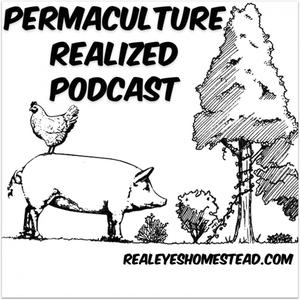 Permaculture Realized Podcast
Permaculture Realized Podcast
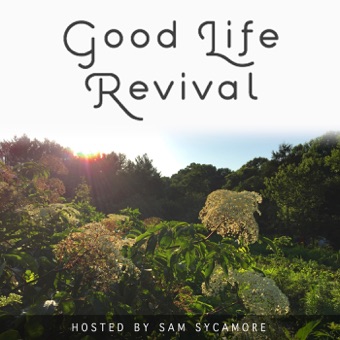 Good Life Revival: Permaculture, Rewilding, Homesteading
Good Life Revival: Permaculture, Rewilding, Homesteading
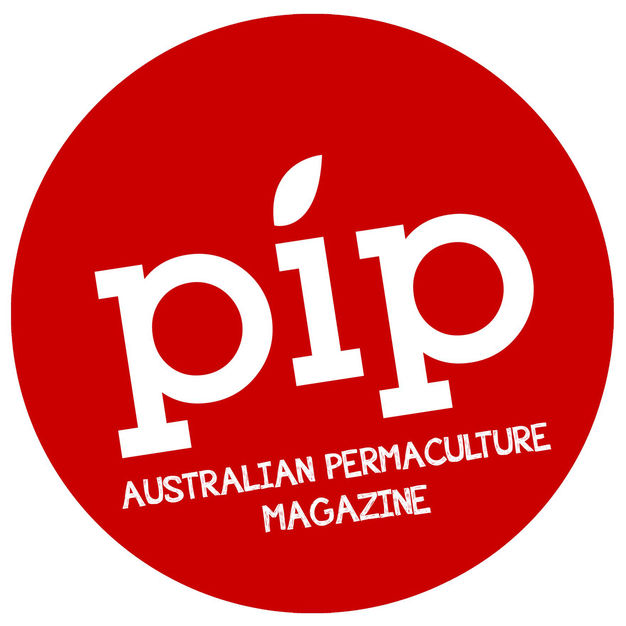 Pip Permaculture Podcast
Pip Permaculture Podcast
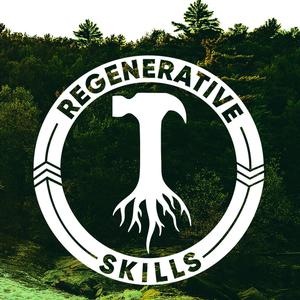 Regenerative Skills
Regenerative Skills
 Regenerative Permaculture Farm and Garden Podcast
Regenerative Permaculture Farm and Garden Podcast
 A Regenerative Future with Matt Powers
A Regenerative Future with Matt Powers